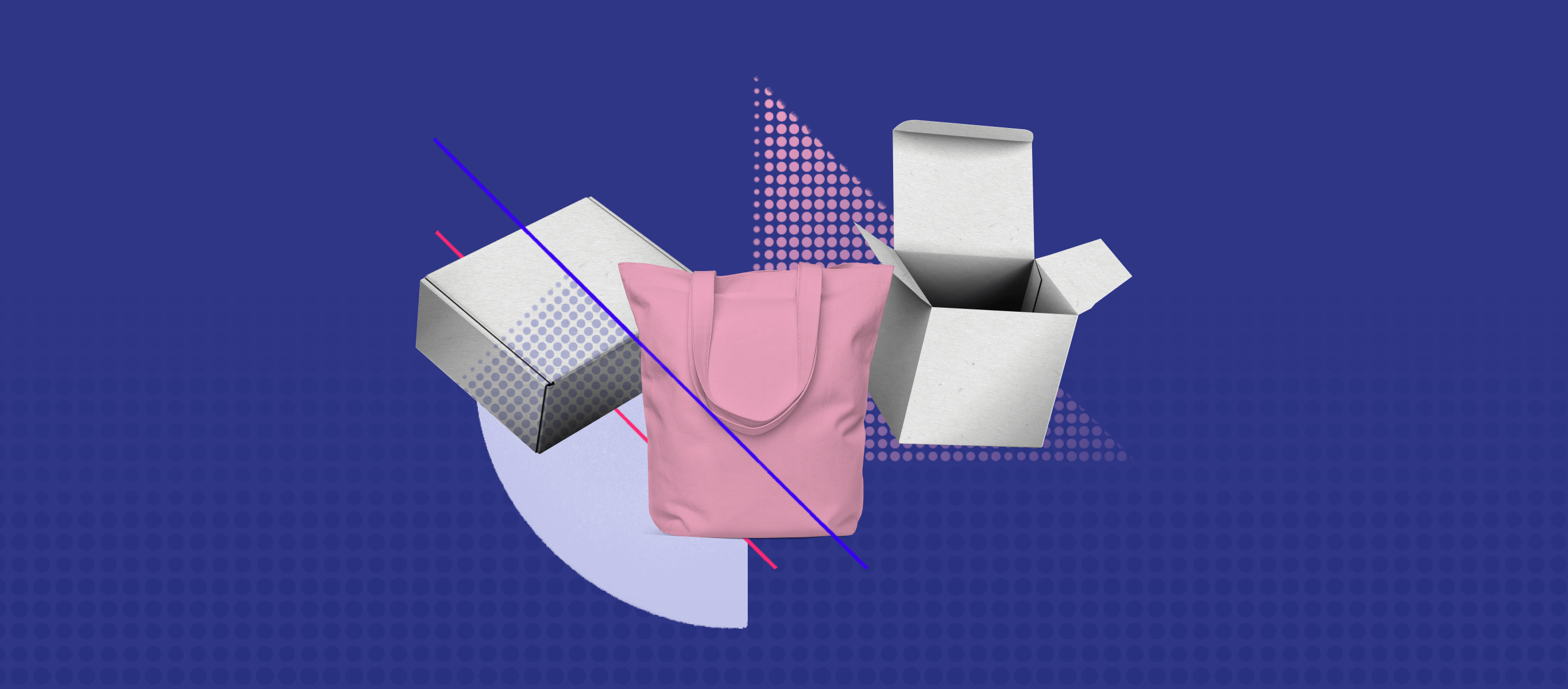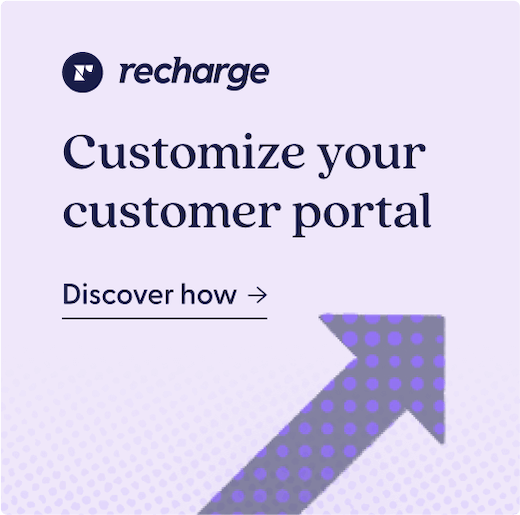Ecommerce, in its simplest form, is about customer acquisition and customer churn rate reduction. A Harvard Business Review study estimates that customer acquisition is five times more expensive than customer retention. In other words, for every $1 you’re spending on retaining your existing subscribers, you’re spending $5 to obtain new subscribers.
While this statement alone should be enough of a reason to focus on churn, customer acquisition has become even more resource-intensive due to new difficulties in tracking and targeting new customers (thanks, in part, to the new iOS 14 update). Here, we walk you through why understanding churn is so important, and discuss key strategies your ecommerce brand can take to reduce churn.
How to understand your customer churn
Before we can truly dive into strategies on preventing more customers from cancelling their subscriptions with you, we need to gain a better understanding of why they are churning. Let’s take a look at how Recharge merchants analyze churn data to see the reasons their customers give for churning.
Under the Recharge Dashboard > Analytics > Customer Cohort, scroll down to “Cancellation Reason.” Here, we can see what reasons the customers are selecting for leaving.
Let’s take a peek at our test store:

The cancellation reasons on the left, such as “I can’t afford it,” are being pulled from the cancellation retention strategies found under Settings > Customer portal > Cancellation and customer retention. Additionally, the size of this customer cohort is displayed at the top right of this page. In this case, our cohort for the past completed month is 27,375 customers.
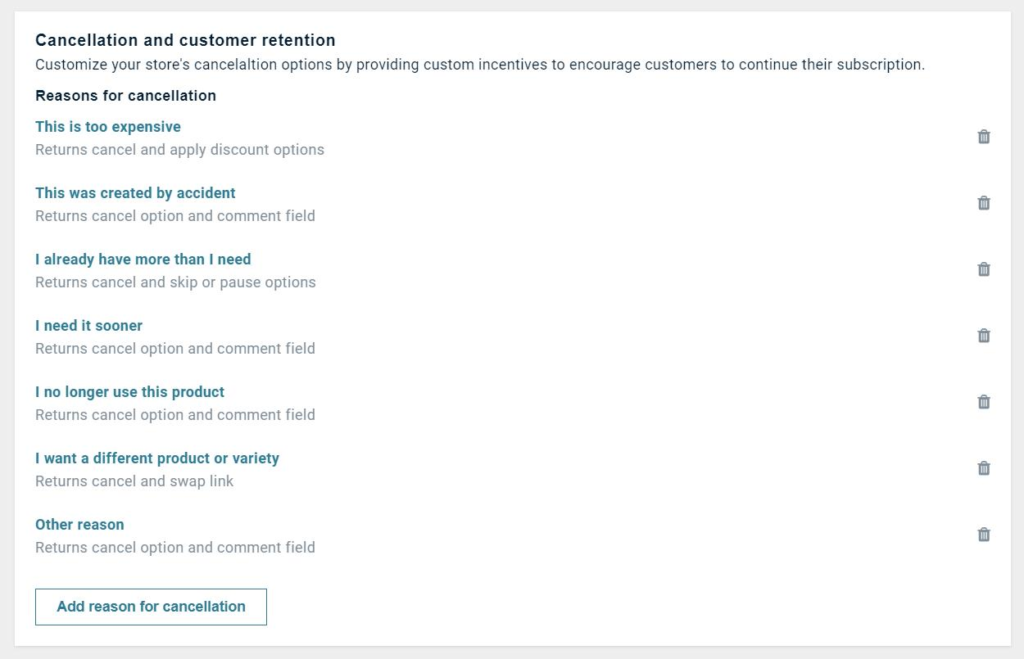
Looking at this example, we can see that approximately 750 customers cancelled because they don’t want to be locked into subscriptions. Another ~300 cancelled because it’s too expensive. Gathering customer feedback in this way and breaking down the data enables you to make strategic decisions on how to address your churn rate.
Note: If you offer the “Other” cancellation reason, like in this example, try to collect as much customer feedback as possible as to why they’re leaving. Otherwise, the “Other” cancellation reason doesn’t provide as much value, and makes it difficult to address the root cause of their churn.
Reactive customer retention strategies
Now that we have a better understanding of why our customers cancel, let’s see what we can do to stop it. Oftentimes, leveraging a customer success model, your team can hone in on the issue, ultimately increasing customer satisfaction. Assuming your customers want to cancel via the customer portal, you have an opportunity to address their reason for canceling, then provide a direct solution, which will hopefully end up reducing customer attrition. Let’s take a closer look at the customer flow:
A customer no longer wants a product because it’s too expensive for them, so they log onto their customer portal and click on “Cancel Subscription.” From there, they’re presented with multiple cancellation reasons, and they select “This is too expensive.” The next window asks something like, “Could we convince you to stay with a 25% discount?”, with an “Apply Discount” call to action.
This is a truly powerful customer experience because they can still cancel if they’d like, but instead, you’re giving them an opportunity and incentive to stay with your brand. This proactive customer support—meeting them where they are—ultimately prevents passive or involuntary churn.
Additional customer retention incentives include:
- Apply a discount
- Skip next charge
- Delay a subscription
- Swap a product
Pro tip: Be mindful of customers trying to “game” your system. Making the retention discount only applicable once might be a preferred solution without running the risk of customers threatening to leave just for a deal.
Proactive customer churn reduction
The retention strategies mentioned above are great solutions, but reactive in nature—a customer is already thinking about cancelling when presented with alternatives. When coupling this goal with a proactive approach, you can engage the customer well before they’re ready to cancel, and create a compelling narrative that shows why cancelling is ill-advised.
Take a look at this Cohort Retention dashboard via the Recharge Analytics tab. Where can you identify the biggest drop-off in subscribers?
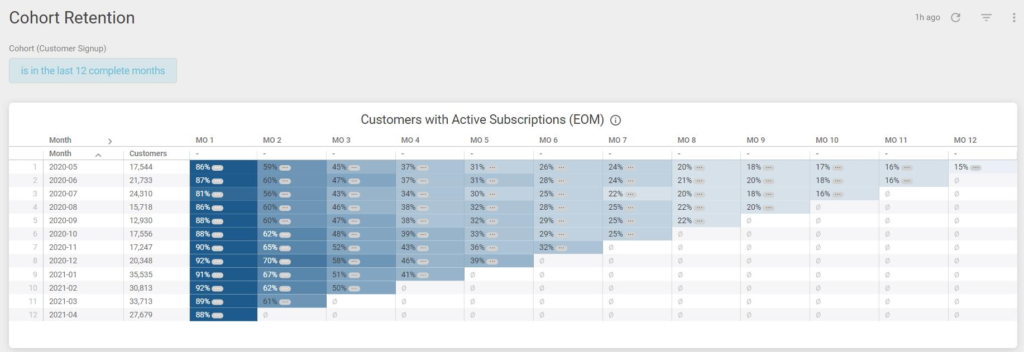
In this example, on average, there’s a 20-30% dropoff after the first month. So, after their first charge, we might want to send them a promotional email offering them an incentive, such as a free gift to stay for their next charge.
Another analytics tool within the Customer Cohort that can provide some insight into customer drop-off is the “Charges Per Customer” field with a wider date range (i.e. 6 months or 1 year). How many charges do you get from your customers? This can also be indicative of when they cancel their subscriptions.
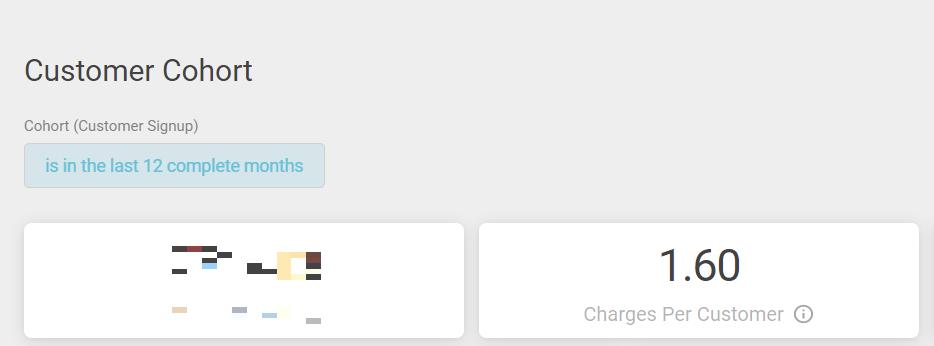
In the screenshot above, we can see that a customer will typically drop off after their first charge.
Once you know that your customer base has a higher tendency to cancel after the Nth charge, you can identify at-risk customers. Try offering them an incentive, such as a discount or a gift with purchase, before that charge. If you’re using a customer loyalty program, bonus points for specific charges also work well to incentivise them to stay.
The sooner we can get in front of the customer’s Nth charge, the easier it will be to prevent them from even thinking about churning. We’ve now changed the customer’s mindset from:
“I want to cancel, but if I could get a discount, I’d stick around for another charge” to
“I want to stay for at least three charges since I want that free shirt or bonus.”
Address underlying issues to reduce passive churn
Remember that not all churn is voluntary—it’s important to consider both voluntary and involuntary churn. Sometimes, customers don’t want to willingly cancel their subscriptions, and instead need to address an underlying issue, such as having an expired card or insufficient funds. Having a strategy to handle these pain points in the customer journey is often beneficial and can make your customers feel more cared for.
Out of the box, Recharge offers a system to retry failed charges when payments fail. This can be found under Settings > Payments (General) > Failed Charges. From here, you can control how many times you want to retry a failed charge, and the interval between each attempt. The notification the customer will receive depends on their error. The list can be found under Settings > Notifications. You can customize them and make sure they fit your brand and tone!
If you’re looking for a more tailored dunning experience, take a look at Churn Buster. Their main focus is reducing customer churn, and they offer a great toolset to help you to do so.
Another aspect of passive churn reduction is providing customers with the options they seek that would otherwise make them cancel. For example, we often see passive churn happening when customers are looking to skip a shipment or swap out products, but can’t. Providing your customers with a customizable experience increases loyalty, ultimately reducing churn.
Empower your existing customers to reduce passive churn
In the vein of being proactive, enabling your customers to take those quick actions themselves can greatly help with your overall average customer lifetime value (LTV) and help improve your monthly churn rate.
In case you’re wondering what actions your customers can take, go to Settings > Customer Portal > Customer portal controls.
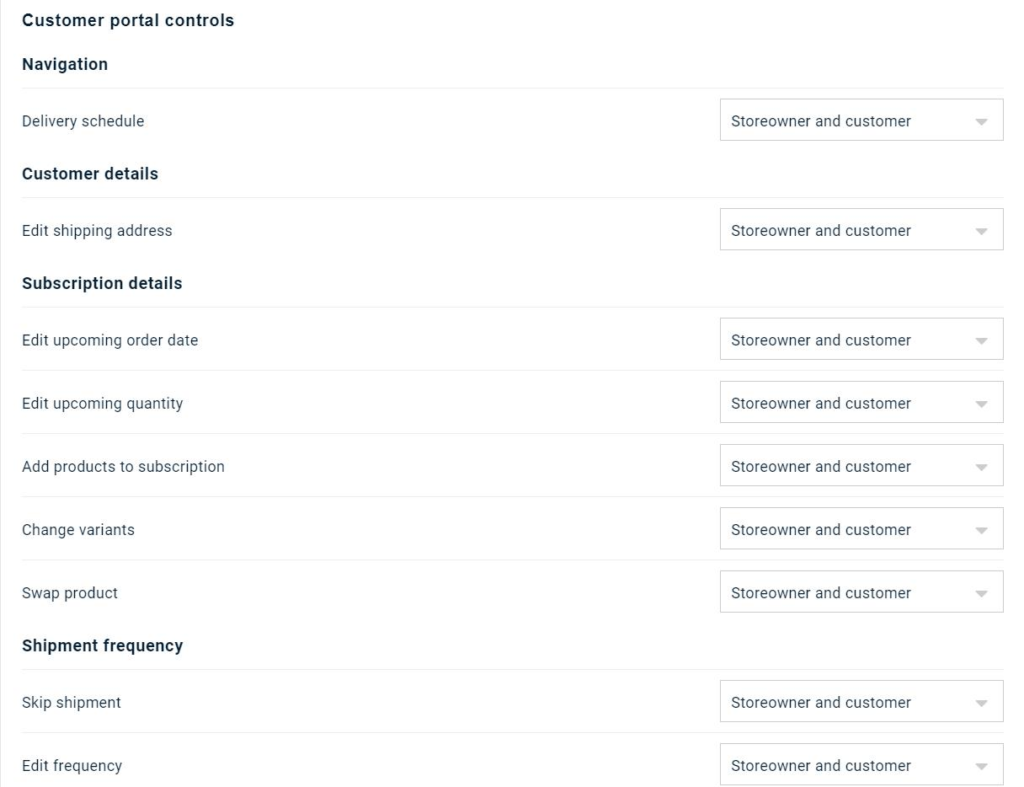
We’ve recently revamped our Actions dashboard to help you understand the impact of each action on your overall LTV. This tool can be extremely valuable in determining how you want to empower your customers.
For instance, offering a discount may lower LTV in the short term; however it can, and often will, greatly increase it in the long run. Other actions, such as swaps and skips, typically follow a similar trend. Take a look at your analytics, and identify how each source, action, and date filter impacts your overall LTV.
It’s important to understand that any time a customer takes an action, they’re engaging with your brand. Skips and swaps are opportunities for them to tell you that they still like your product, but either need a break or want to try something that might be a better fit. Preventing them from taking either of these actions forces them to make a choice that often leads to churn.
TL;DR: Increase customer satisfaction and engage users to reduce your churn
Engaging with your customers and empowering them to take actions are powerful strategies for increasing your LTV and reducing your churn rate. Gaining an understanding of why they typically cancel allows you to respond to this on two occasions: One, when they’re trying to cancel, and two, before they’re even thinking about it.
Defining your churn strategy will enable you to meet subscribers where they are and keep them as your active customers. Remember, customers stay with companies that have an excellent customer experience. Often, customers are likely to churn from companies that offer poor customer service or a poor customer experience. Providing your subscribers with opportunities to customize their experience and stay engaged with you makes them feel connected to your brand.
Happy customers stay. Frustrated customers leave. Preventing that frustration inevitably helps you reduce customer churn.
